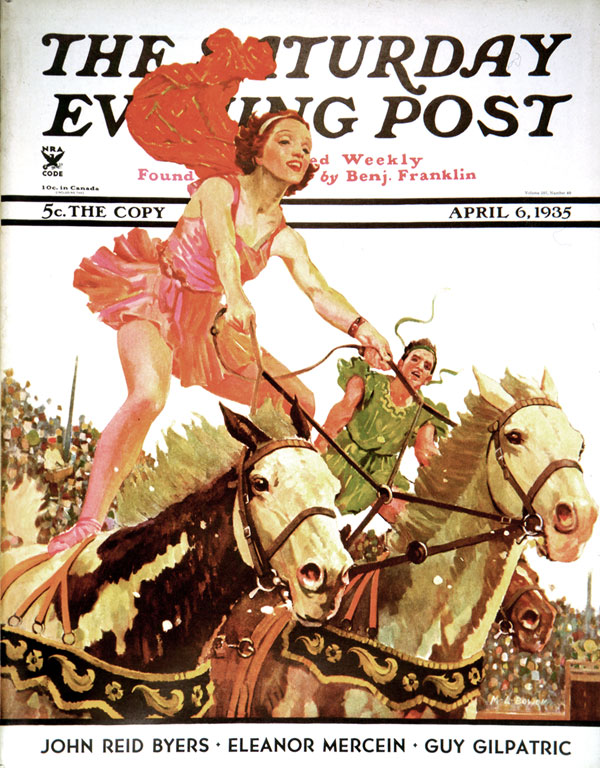I got the idea this weekend that pink lemonade cookies might taste good. I thought they might seem light and refreshing and their color welcome in the middle of what has become a snowy winter. So I looked around for a decent-looking recipe, and I'm making some tonight. I've got a sheet's worth in the oven right this very minute.
While we're waiting for them to finish baking, let's find out about pink lemonade.

Strawberry pink lemonade. It's kind of funny that people get all highbrow fancy about pink lemonade, once you know its origins.
(Photo and recipe from Fine Cooking)
While we're waiting for them to finish baking, let's find out about pink lemonade.

Strawberry pink lemonade. It's kind of funny that people get all highbrow fancy about pink lemonade, once you know its origins.
(Photo and recipe from Fine Cooking)
- The fact that it's called "pink" lemonade as opposed to some specifically-named fruit lemonade leaves the door open for whatever ingredient you want to use to make it turn pink.
- Depending on your taste, you might want the pink in your pink lemonade to be made from:
- Raspberry
- Strawberry
- Cranberry
- Cherry
- Cinnamon red hot candies
- Here are some varying recipes for pink lemonade, to prove my point:
- CHOW recipe's raspberry syrup lemonade
- The Little Kitchen's strawberry pink lemonade (scroll past all the pretty photos to the recipe)
- Martha Stewart's superfine pink lemonade with cranberry juice
- Ina Garten's adult pink lemonade with grenadine and maraschino cherries

CHOW's raspberry lemonade
(Photo and recipe from CHOW)
- But which, you might wonder, is the "real" pink ingredient? How was the original pink lemonade made?
- Well, there are all sorts of stories about the first pink lemonade. As is often the case in identifying firsts, no one is exactly sure which version came first, or which one is the truth. But all the stories have the whiff of the much-embellished about them. So I will present all of them to you and leave it to you to decide which one you like best.
- Just Plain Dyed -- in 1857, a guy named Pete Conklin who sold lemonade and other beverages at a circus concession stand happened to run out of water to make his lemonade. Being an enterprising sort, he dashed about the tents looking for more water. In his search, he came across a woman named Fannie Jamieson, one of the women who rode horses on bareback. She had just put her pink tights to soak in a vat of water, and the aniline dye from her tights turned the water pink.

This is the sort of bareback rider we're talking about.
(Saturday Evening Post cover image by Norman Rockwell, from the Normal Rockwell Museum)
- Mr. Conklin took the vat of pink water back to his concession stand, mixed up more lemonade, and sold it as "fine strawberry lemonade." He did a rousing business.
- Some versions say he didn't notice the water had turned pink until he'd already mixed a batch; other versions suggest he knew it was pink all along. Either way, by the second batch, he knew what he'd done, but he kept right on mixing more.
- I want to note here that it was quite common for a long time for lots of food and drink to be adulterated -- milk to be watered down, butter to be made of watery milk and marigold dye, all kinds of stuff like that. It wasn't until the early 20th century when lots of regulations were passed that said the food & drink you sold had to contain what you said it did, and no toxic stuff either. So it wasn't much of a stretch for Mr. Conklin to sell lemonade dyed with dirty tights-water as "fine strawberry lemonade."
- Red Hot Lemonade -- Another circus fellow, Henry E. Allott, better known as "Bunk Allen," was a Chicago saloon-keeper, a gambler, and a circus promoter. He was something of a public figure, in the sense that he got arrested a lot, because the New York Times ran his obituary when he died in 1912. There, they reported that Bunk invented pink lemonade when he was a teenager (which would have been around the 1870s). One fateful day, while mixing up the original yellow lemonade, he somehow dropped in a bunch of red-dyed cinnamon candies by accident. "The resulting rose-mixture sold so surprisingly well that he continued to dispense his chance discovery," the NYT obituary said.

Try putting a bunch of red hots like these in your lemonade, and let me know if it's at all edible. Or drinkable. Cinnamon pink lemonade is the one variety I couldn't find a recipe for.
(Image from Wikipedia)
- Sounds to me like this guy was a rum-runner during Prohibition, and he started his life of selling the illegal hooch early, when he was a teenager. The lemonade was probably a mixer for something a little more potent -- gin, maybe. The cinnamony-pink lemonade would have been a novelty to his customers, who might also have been looking for something to disguise the harder stuff mixed into it. "Relax, Copper, it's only pink lemonade."
- That previous paragraph is all my reading-between-the-lines supposition, of course.
- It is reported, however, that Bunk Allen said on his deathbed that he didn't want a priest, but that "When I'm planted, I want everybody to have a drink on me."

Where Bunk was planted. And where we should all have a drink? Bunk Allen's gravestone in Forest Home Cemetery, Forest Park, IL.
(Photo from Find a Grave)

Perhaps what we should drink on Bunk Allen's grave should be a glass of Rachael Ray's pink lemonade with gin and ginger ale.
(Photo and recipe from Every Day with Rachael Ray)
- Whoops, I Dyed it Again -- Another circus dude, this one named W. H. A. Tobey, said he came up with pink lemonade by accident, in the 1860s. His story is remarkably like Conklin's pink-tights-dyed lemonade, except Tobey's story removes him from some of the blame of selling an adulterated substance, and it has more signs of the tall tale about it.
- His story goes that he was working with a circus called Forepaugh's, and they were touring the Southwest. Water was so scarce ("How scarce was it?") they didn't have enough water to sell lemonade. When he went to check on the horses, he got an idea. He says a red blanket had fallen into their water trough, dyeing it pink, and the horses wouldn't drink the water. So he brought the pink horse-blanket-water to the lemonade salesman, they mixed up a batch of lemonade with it, and sold it as colored lemonade. Horses wouldn't drink the water, but people sure drank the pink lemonade. It was such a hit, Tobey and the lemonade man made their pink lemonade at every stop after that.

Poster for Forepaugh and Sells Brothers Circus. Lots of bareback riders of all sorts. Presumably, none of these horses would drink the pink water -- but people watching them would.
(Image from Wikimedia Commons)
- Dye it One More Time -- Yet another circus man said he was the one who came up with pink lemonade. This time, it was a guy named William Henry Griffith (not the Welsh-Anglican cleric), and his story removes him almost entirely from blame. He says he had a batch of lemonade all mixed up and ready to go when, lo and behold, what should occur but a pair of a circus performer's red tights blew off a clothesline and into his vat of lemonade.
- What was he to do? Should he have fished out the tights and mixed up a new fresh batch? Never! The tights must have dyed the lemonade instantly, rendering it impossible for him to undo the damage, and a customer must have happened by at that very instant, parched from thirst, begging for life-restoring lemonade immediately, and hang it all if it was dyed pink, the customer must have that essential lemonade. And what do you know, the customer found it delicious, rejuvenating, even, and so what choice did Griffith have but to sell that red-dyed lemonade? It was never his fault at all the lemonade wound up dyed, no sir.
- Again, I embellish. But only to point out the latent but too-obvious ridiculousness of his story.

Pink tights, hanging up to dry. Are these the real inventors of pink lemonade?
(Photo from Rori roars)
- Well, it seems pink lemonade has a none-too-savory past. (Which makes sense, since it's very sweet, har har.) But it does seem likely that pink lemonade was first mixed by some circus beverage-seller, and that its popularity spread across the country as the circus(es) made their rounds. Which would explain why no one is exactly sure where it appeared first or most memorably.
- Now for the cookie update. Alas and alack, my cookies are turning out like crap. They're hard little knobs that won't spread out on the cookie sheet, and they don't have much flavor. I suspect this is my fault, not the fault of the recipe. Because I monkeyed with it.
- I doubled the recipe, first of all, which doesn't usually create problems. But then I wanted more lemonade flavor, so I added some lemon juice. Not quite enough lemon flavor, so I added some lemon extract. That helped, but it seemed overly sweet, so I added a quarter teaspoon of salt, which I thought brought out the tartness. The extra lemon juice seemed to have made the batter too moist, so I added some extra flour. And I think this is where I ran afoul.
- So I will spare you photos of my sad knobby little cookies. Instead, I will direct you to the recipe I used and instruct you to adhere to the recipe more closely than I did. I'm sure your cookies will turn out better than mine.

This is what the BHG cookies should have looked like. The cookies in this picture were made according to Betty Crocker's recipe, which calls for a sugar cookie mix. I don't like using mixes, but if you do, this might be a good choice for you.
(Photo from Betty Crocker)
Sources
Mental Floss, Why Is Pink Lemonade Pink?
The Huffington Post, Pink Lemonade: The Story Behind Its Pink Color, 4/15/2014
Josh Chetwynd, How the Hot Dog Found Its Bun: Accidental Discoveries and Unexpected Inspirations that Shape What We Eat and Drink, pp 116-117
Odd Loves Company, National Radio Day, National Lemonade Day!
No comments:
Post a Comment
If you're a spammer, there's no point posting a comment. It will automatically get filtered out or deleted. Comments from real people, however, are always very welcome!